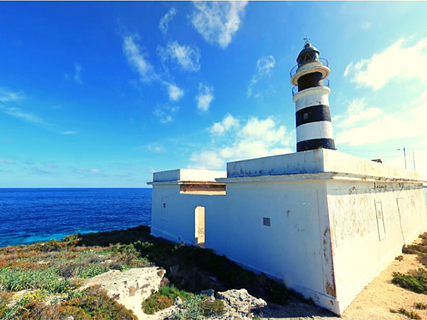Ibiza Top Sightseeing
Faro de los ahorcados
Parks and Nature | Sant Josep de sa TalaiaThe project was drafted by Antonio López y Montalvo. Given the complications involved in the construction of a lighthouse on this islet, no bidder was presented to the auction and the works had to be carried out by the Administration. It was built between 1854 and 1856. It began to operate with a fixed catadioptric optic of 6th order built by the Sautter house, having for the illumination a moderating oil lamp. It was inaugurated on May 1, 1856. As the tower was very low and affected by the spray from the sea, the crystals of the lantern quickly lost transparency and its light could not be appreciated with sufficient clarity in this dangerous passage between Ibiza and Formentera. For this reason, in 1857 it was proposed to change its category to become a 4th order lighthouse, inaugurating its new light on November 30, 1861, although its appearance remained as a fixed white light. In this new project, carried out by Emili Pou, the tower was also raised by five meters. The optics removed was placed in the Botafoc lighthouse which was inaugurated that same night of 1861. Subsequently, the lighthouse became a concealment lighthouse. It seems that the lighthouse keepers acted several times to save the lives of the castaways. In one of those heroic acts, on February 11, 1881, the two lighthouse keepers died while trying to help the crew of the English steamship Flaminian that was making its route between Gibraltar and Genoa. Given the harsh living conditions that the lighthouse keepers and their families, the only inhabitants of this small islet, had to endure, it was the first lighthouse to be automated through the use of the then modern Swedish technology, which used acetylene gas for the operation of a series of lighting systems with automatic ignition by means of a solar valve. As a consequence of this technological incorporation, the lighthouse was left without personnel living on the island since 1929.
Download your Ibiza guide!
Favorites
-
- You have currently no favorites. Click on to start planning your trip.





